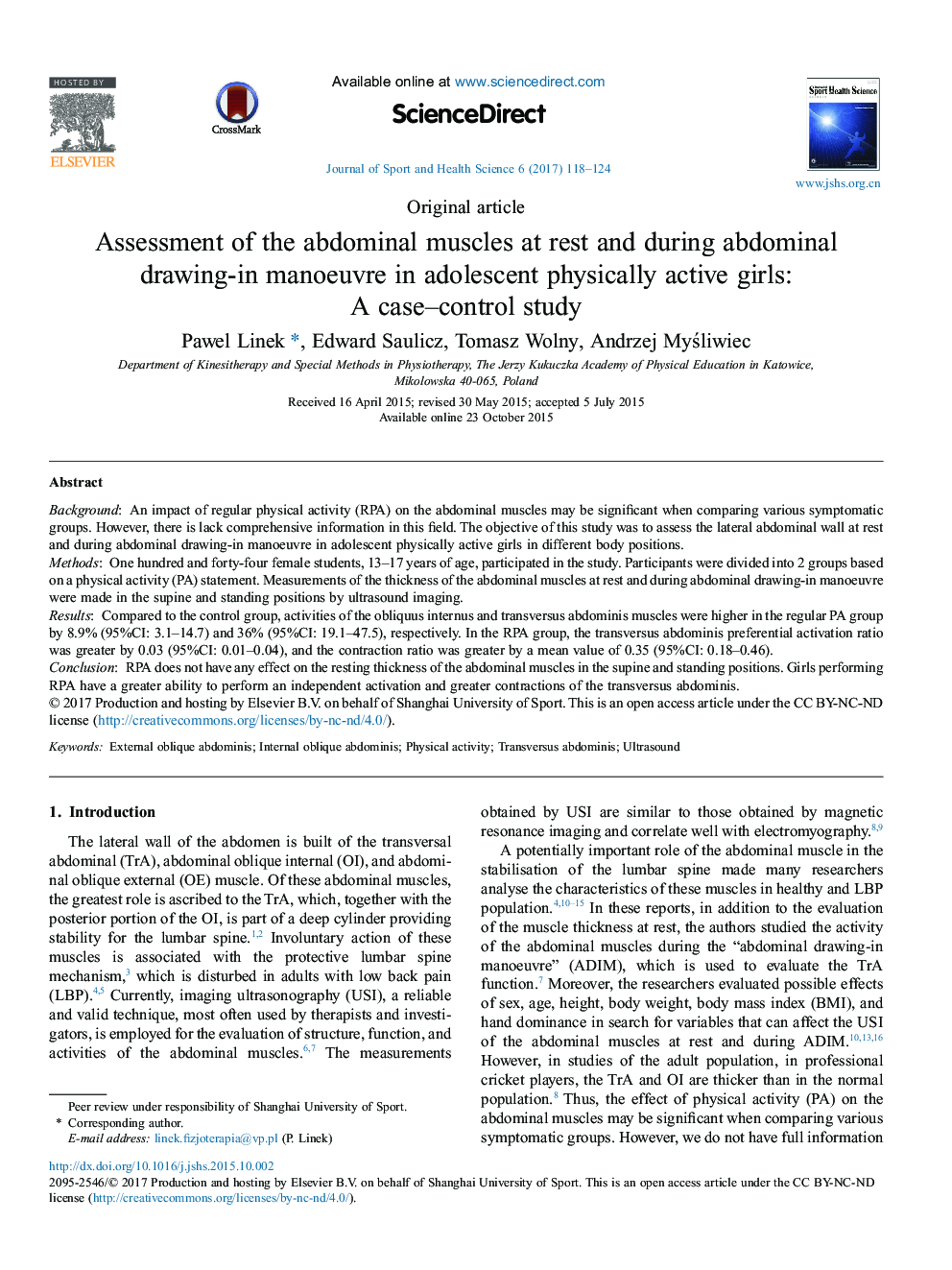| Article ID | Journal | Published Year | Pages | File Type |
|---|---|---|---|---|
| 5122069 | Journal of Sport and Health Science | 2017 | 7 Pages |
BackgroundAn impact of regular physical activity (RPA) on the abdominal muscles may be significant when comparing various symptomatic groups. However, there is lack comprehensive information in this field. The objective of this study was to assess the lateral abdominal wall at rest and during abdominal drawing-in manoeuvre in adolescent physically active girls in different body positions.MethodsOne hundred and forty-four female students, 13-17 years of age, participated in the study. Participants were divided into 2 groups based on a physical activity (PA) statement. Measurements of the thickness of the abdominal muscles at rest and during abdominal drawing-in manoeuvre were made in the supine and standing positions by ultrasound imaging.ResultsCompared to the control group, activities of the obliquus internus and transversus abdominis muscles were higher in the regular PA group by 8.9% (95%CI: 3.1-14.7) and 36% (95%CI: 19.1-47.5), respectively. In the RPA group, the transversus abdominis preferential activation ratio was greater by 0.03 (95%CI: 0.01-0.04), and the contraction ratio was greater by a mean value of 0.35 (95%CI: 0.18-0.46).ConclusionRPA does not have any effect on the resting thickness of the abdominal muscles in the supine and standing positions. Girls performing RPA have a greater ability to perform an independent activation and greater contractions of the transversus abdominis.
